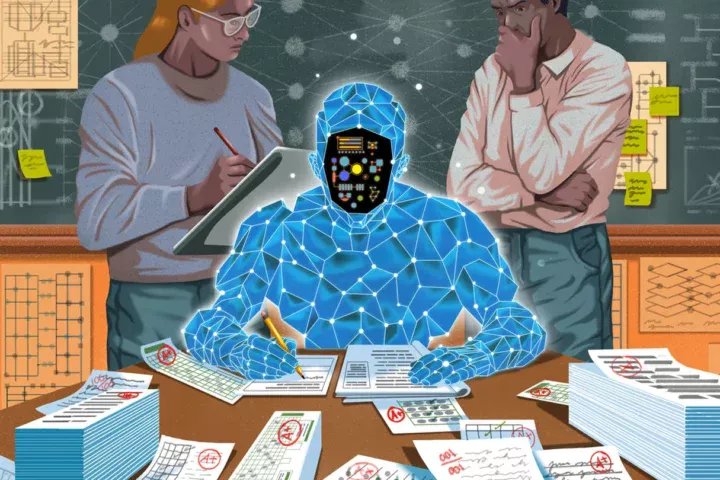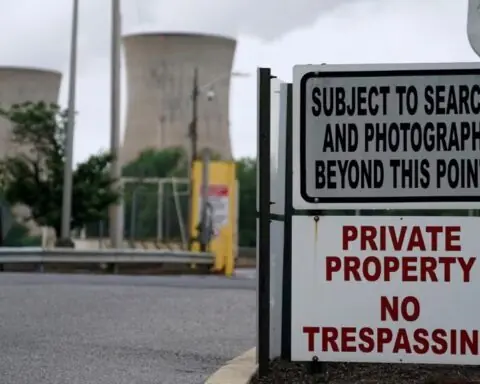Find out how scientists created a virtual telescope as large as Earth itself to capture the first image of a black hole’s silhouette.
Accomplishing what was previously thought to be impossible, a team of international astronomers has captured an image of a black hole’s silhouette.
Evidence of the existence of black holes – mysterious places in space where nothing, not even light, can escape – has existed for quite some time, and astronomers have long observed the effects on the surroundings of these phenomena. In the popular imagination, it was thought that capturing an image of a black hole was impossible because an image of something from which no light can escape would appear completely black. For scientists, the challenge was how, from thousands or even millions of light-years away, to capture an image of the hot, glowing gas falling into a black hole.
An ambitious team of international astronomers and computer scientists has managed to accomplish both. Working for well over a decade to achieve the feat, the team improved upon an existing radio astronomy technique for high-resolution imaging and used it to detect the silhouette of a black hole – outlined by the glowing gas that surrounds its event horizon, the precipice beyond which light cannot escape. Learning about these mysterious structures can help students understand gravity and the dynamic nature of our universe, all while sharpening their math skills.
How They Did It
Though scientists had theorized they could image black holes by capturing their silhouettes against their glowing surroundings, the ability to image an object so distant still eluded them. A team formed to take on the challenge, creating a network of telescopes known as the Event Horizon Telescope, or the EHT. They set out to capture an image of a black hole by improving upon a technique that allows for the imaging of far-away objects, known as Very Long Baseline Interferometry, or VLBI.
Telescopes of all types are used to see distant objects. The larger the diameter, or aperture, of the telescope, the greater its ability to gather more light and the higher its resolution (or ability to image fine details). To see details in objects that are far away and appear small and dim from Earth, we need to gather as much light as possible with very high resolution, so we need to use a telescope with a large aperture.
That’s why the VLBI technique was essential to capturing the black hole image. VLBI works by creating an array of smaller telescopes that can be synchronized to focus on the same object at the same time and act as a giant virtual telescope. In some cases, the smaller telescopes are also an array of multiple telescopes. This technique has been used to track spacecraft and to image distant cosmic radio sources, such as quasars.
Making up one piece of the EHT array of telescopes, the Atacama Large Millimeter/submillimeter Array (ALMA) in Chile has 66 high-precision antennas. Image credit: NRAO/AUI/NSF | + Expand image
The aperture of a giant virtual telescope such as the Event Horizon Telescope is as large as the distance between the two farthest-apart telescope stations – for the EHT, those two stations are at the South Pole and in Spain, creating an aperture that’s nearly the same as the diameter of Earth. Each telescope in the array focuses on the target, in this case the black hole, and collects data from its location on Earth, providing a portion of the EHT’s full view. The more telescopes in the array that are widely spaced, the better the image resolution.
To test VLBI for imaging a black hole and a number of computer algorithms for sorting and synchronizing data, the Event Horizon Telescope team decided on two targets, each offering unique challenges.
The closest supermassive black hole to Earth, Sagittarius A*, interested the team because it is in our galactic backyard – at the center of our Milky Way galaxy, 26,000 light-years (156 quadrillion miles) away. (An asterisk is the astronomical standard for denoting a black hole.) Though not the only black hole in our galaxy, it is the black hole that appears largest from Earth. But its location in the same galaxy as Earth meant the team would have to look through “pollution” caused by stars and dust to image it, meaning there would be more data to filter out when processing the image. Nevertheless, because of the black hole’s local interest and relatively large size, the EHT team chose Sagittarius A* as one of its two targets.
A close-up image of the core of the M87 galaxy, imaged by the Chandra X-ray Observatory. Image credit: NASA/CXC/Villanova University/J.
This image from NASA’s Hubble Space Telescope shows a jet of subatomic particles streaming from the center of M87*. Image credits: NASA and the Hubble Heritage Team (STScI/AURA)

The second target was the supermassive black hole M87*. One of the largest known supermassive black holes, M87* is located at the center of the gargantuan elliptical galaxy Messier 87, or M87, 53 million light-years (318 quintillion miles) away. Substantially more massive than Sagittarius A*, which contains 4 million solar masses, M87* contains 6.5 billion solar masses. One solar mass is equivalent to the mass of our Sun, approximately 2×10^30 kilograms. In addition to its size, M87* interested scientists because, unlike Sagittarius A*, it is an active black hole, with matter falling into it and spewing out in the form of jets of particles that are accelerated to velocities near the speed of light. But its distance made it even more of a challenge to capture than the relatively local Sagittarius A*. As described by Katie Bouman, a computer scientist with the EHT who led development of one of the algorithms used to sort telescope data during the processing of the historic image, it’s akin to capturing an image of an orange on the surface of the Moon.

By 2017, the EHT was a collaboration of eight sites around the world – and more have been added since then. Before the team could begin collecting data, they had to find a time when the weather was likely to be conducive to telescope viewing at every location. For M87*, the team tried for good weather in April 2017 and, of the 10 days chosen for observation, a whopping four days were clear at all eight sites!
Each telescope used for the EHT had to be highly synchronized with the others to within a fraction of a millimeter using an atomic clock locked onto a GPS time standard. This degree of precision makes the EHT capable of resolving objects about 4,000 times better than the Hubble Space Telescope. As each telescope acquired data from the target black hole, the digitized data and time stamp were recorded on computer disk media. Gathering data for four days around the world gave the team a substantial amount of data to process. The recorded media were then physically transported to a central location because the amount of data, around 5 petabytes, exceeds what the current internet speeds can handle. At this central location, data from all eight sites were synchronized using the time stamps and combined to create a composite set of images, revealing the never-before-seen silhouette of M87*’s event horizon. The team is also working on generating an image of Sagittarius A* from additional observations made by the EHT.



















